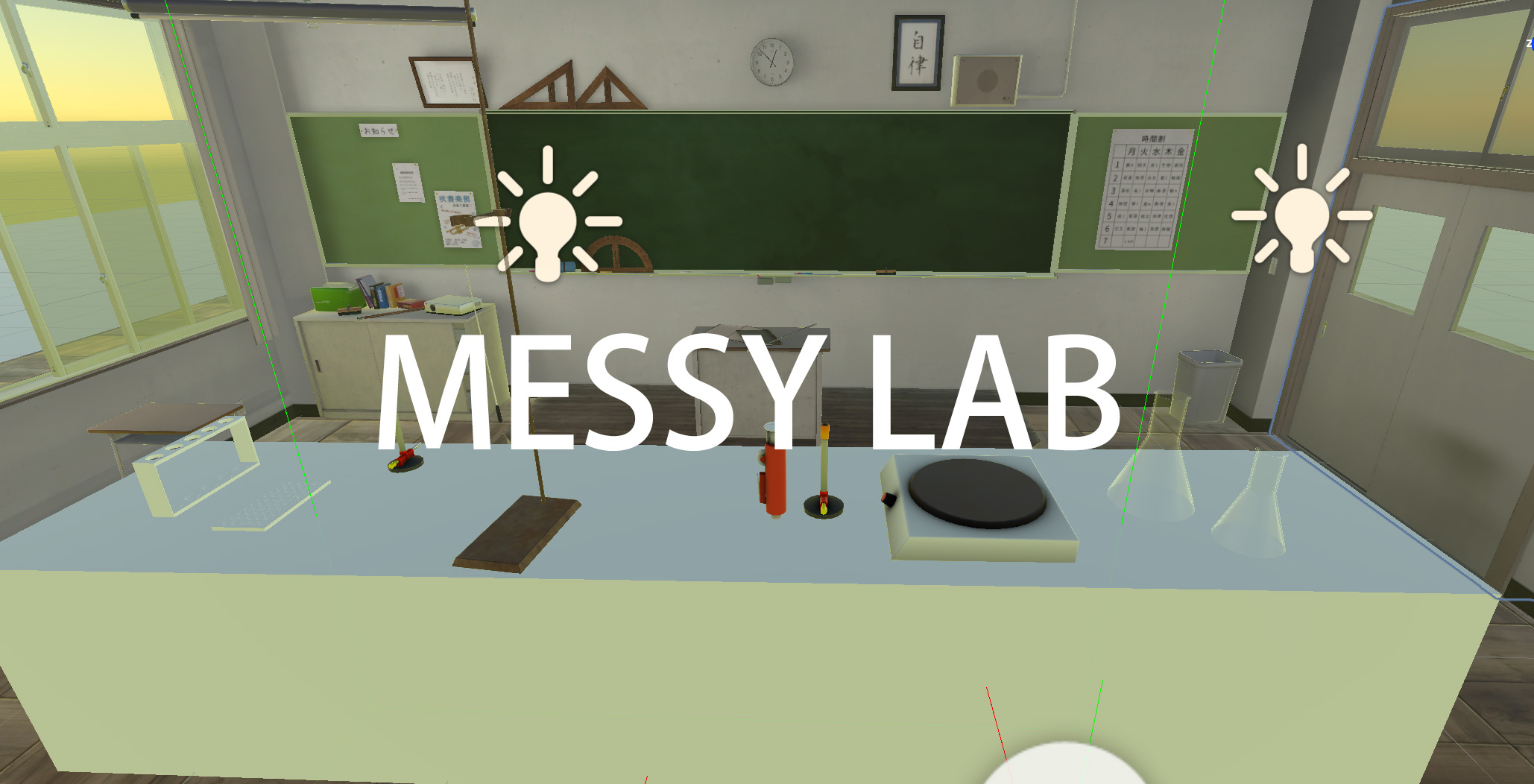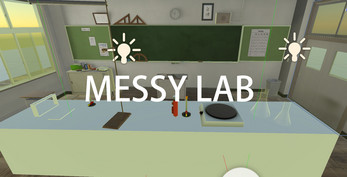
Messy Lab
A downloadable game
Hi, welcome to Messy Lab. It is a Virtual Reality science lab experience empowered by unity. Get your hand messy and make this place messy! From my own experience, among my 4 year’s chemistry education during middle & high school, I only had no more than 4 lab sessions that I could actually hold a test tube. I am not able to mess around but strictly follow the lab procedure. Don’t get me wrong, follow the manual and being precise is very very important, but have you ever thought about putting all different kinds of powders and liquids together and see what happened? This is the place for your curiosity and crazy thoughts! You have infinite resources and chances, it’s all yours! Just remember, crazy thoughts also deserve to be written down!
What need will this game fulfill?
- Distance learning
Since COVID-19 swept across the world, most traditional learning environments have faced a long pause. Distance learning suddenly becomes a vital need for learners quarantine at home. Although streaming can ease the need for most face-to-face types of lectures, subjects that require more hands-on experience need better substitutes. For example, a chemistry science lab class is a vital part for students to understand abstract concepts by doing the experiments themselves to see chemical reactions happening in front of their face. Establishing and maintaining a well-equipped laboratory is a luxury for most institutions. However, Virtual Reality technology makes creating a laboratory with infinite resources become possible, and there is no limitation of space to access the lab.
- Distraction during online learning
While students around the world are having online classes at home. Their concentration on the learning materials becomes a problem. Unique distractions are present in non-classroom environments, and many students attempt to multitask while learning online(Blasiman, 2018). While kindergarten and primary school students have more parent companions while having online classes, middle school students and high school students are more dependent on their self-discipline. Don’t blame them yet, adults are having the same issues. It is hard to voluntarily choose something educational and have a productive life unless we find some element that attracts us. Why would a student choose to sit tight and listen to an online class for 2 hours instead of picking one from millions of entertainment methods? A playable experience could help students engage the learning experience in a different way. Compared to sitting and watching tutorial videos, using a VR headset and controller requires the learner to pay more attention to interact with the learning object. In a VR science lab environment, a learner will actively interact with learning materials instead of passively receive information from the anchor. Messy Lab offers a space for students to mess around and not be serious to inspire their curiosity and ease their resistance to dull learning.
Design Description
Figure1. Learning environment
The lab is designed as a traditional school science classroom. Learners will conduct experiments and voluntarily explore in an environment they are familiar with.
The aesthetic of the learning environment could be an adjustable element in the future to provide the user a more accustomed feeling. However, the appearance of the environment has a varied influence on different learners. To better cooperate with the learning goal[middle & high school science lab], I choose to make it like a middle school science lab instead of a stellar crazy scientist lab.
Figure 2. Interactive dynamics
The dynamics of the game are the simple part of the design. There are three key elements for the dynamic.
1. The freedom of self-exploring the environment. Which needs the player to be able to freely move inside the scene. I was making choices between teleportation(use a prompt sign and teleport the user to the space that has interactable events ) and free exploration(the user would find out themselves on what object is interactable). The reason I choose free exploration is I want the user to regard this lab as a place they can go to instead of a simulator that provides a series of tasks to fulfill.
Figure 3. Teleportation to destination
2. All learning-related objects could be interacted with.
Figure 4. Object Aesthetics
3. Respect physics laws.
Creating a place to teach science means the place should respect laws in science. That makes the mechanics of the game the hardest part and there is always a place to be improved. There are lots of physical characteristics in developing a VR game. There are so many objects that could be visually seen because they are textures but not able to interact with. A Mesh Collider will help the player identify an object in the space, and Rigidbody gives the property to be “touched” by the controller. An XR interactable event will finally make an object be able to be picked up.
Figure 5. Object characteristics
After an object has all those characteristics, it is the first step to become a usable object.
How this game will support learning?
A simulated lab can let a learner get to know a lab from different perspectives. It could be a maintenance perspective to show how complicated to manage a science lab. I could be a researcher perspective to show how many times of failure to reach the anticipated goal. It could be a free explorer's perspective to inspire enthusiasm toward chemistry. The most doable way is to reappear science experiments students learned in class, and use this VR space as supplementary learning material. Even there are no significant differences found between media for procedural knowledge and interactable VR experience, the IVR group reported significantly higher perceived enjoyment and presence than using videos(Guido, 2020). It is reasonable to infer that a learner is more likely to choose VR learning to compare with another formal learning environment when it is a requirement by the education syllabus.
Upcoming Challenges:
Set a simulation environment with static content is easy, the hard part is to keep providing dynamic content to make the environment more interactive. The prime goal for setting this place is using infinite resources to conduct repeatable chemical experiments and free explorations. That means in a responsible attitude, every chemical reaction that involves the materials inside the game should have a preset of what will happen when it reaches specific conditions. A learning environment is only the first step of having a tool, learning content requires more support from professional chemistry educators.
*suggestion by a play tester: add aesthetic features of chemical reaction(spark, heat, bubble, boil) and more physics details(drop a flask and broke, etc).
| Status | In development |
| Author | qcheng |
| Genre | Simulation |
| Tags | science-lab, Virtual Reality (VR) |
Download
This game is currently unavailable

Leave a comment
Log in with itch.io to leave a comment.